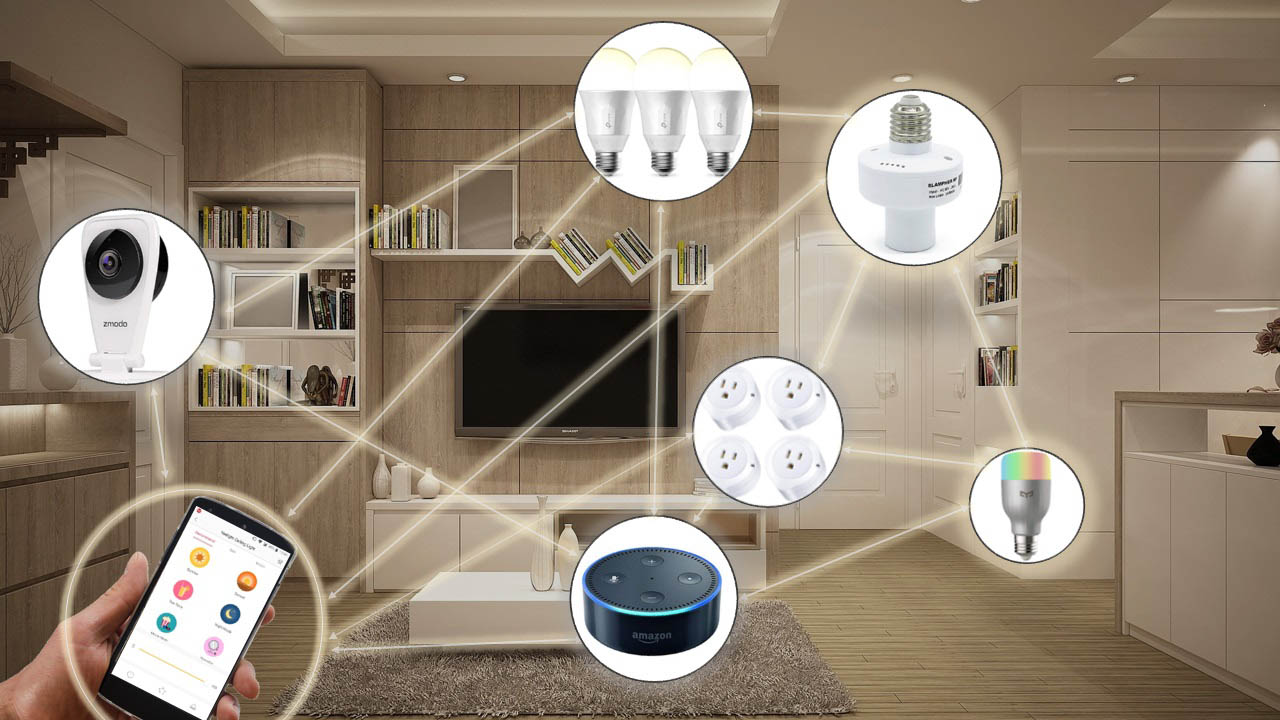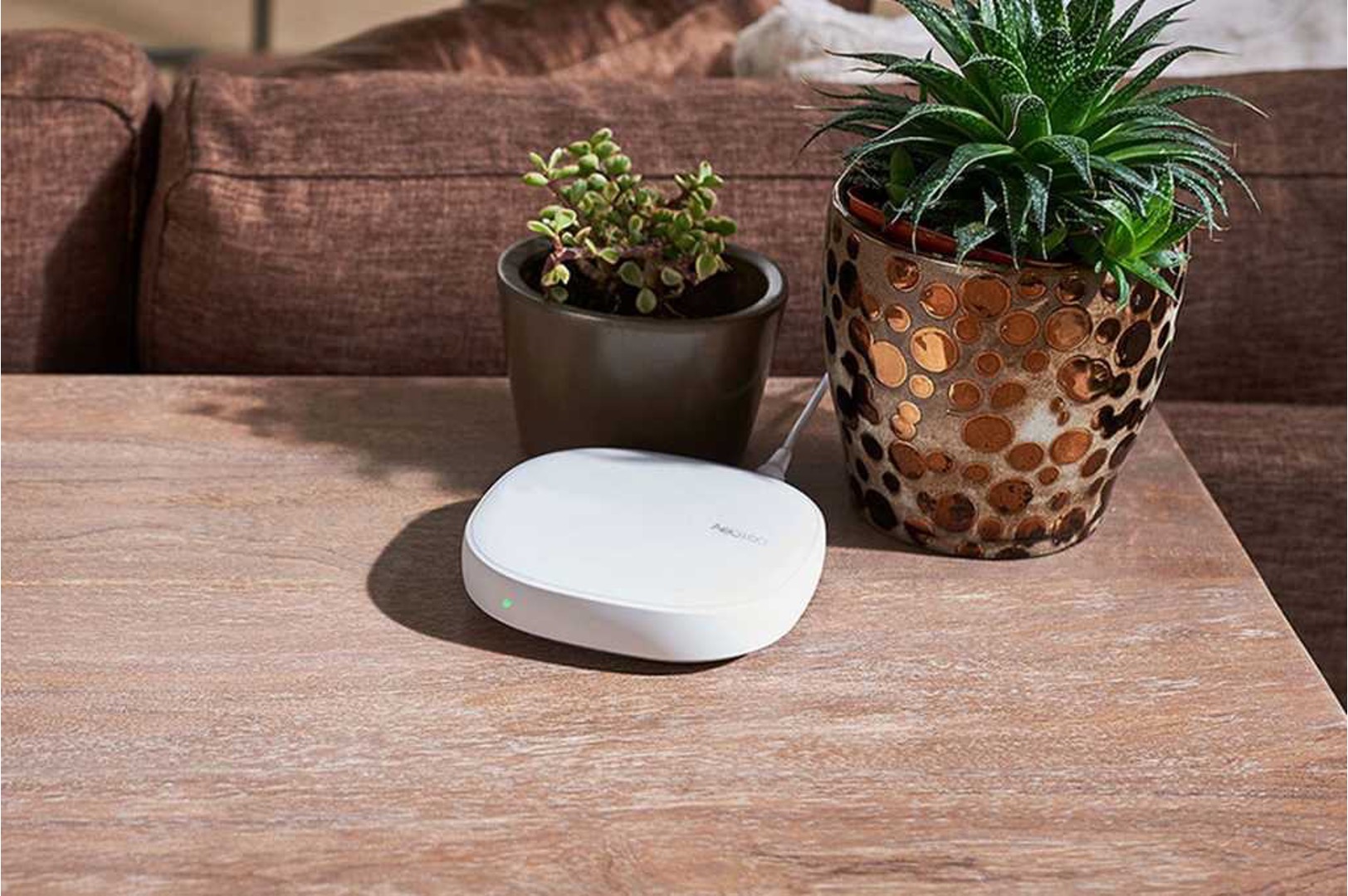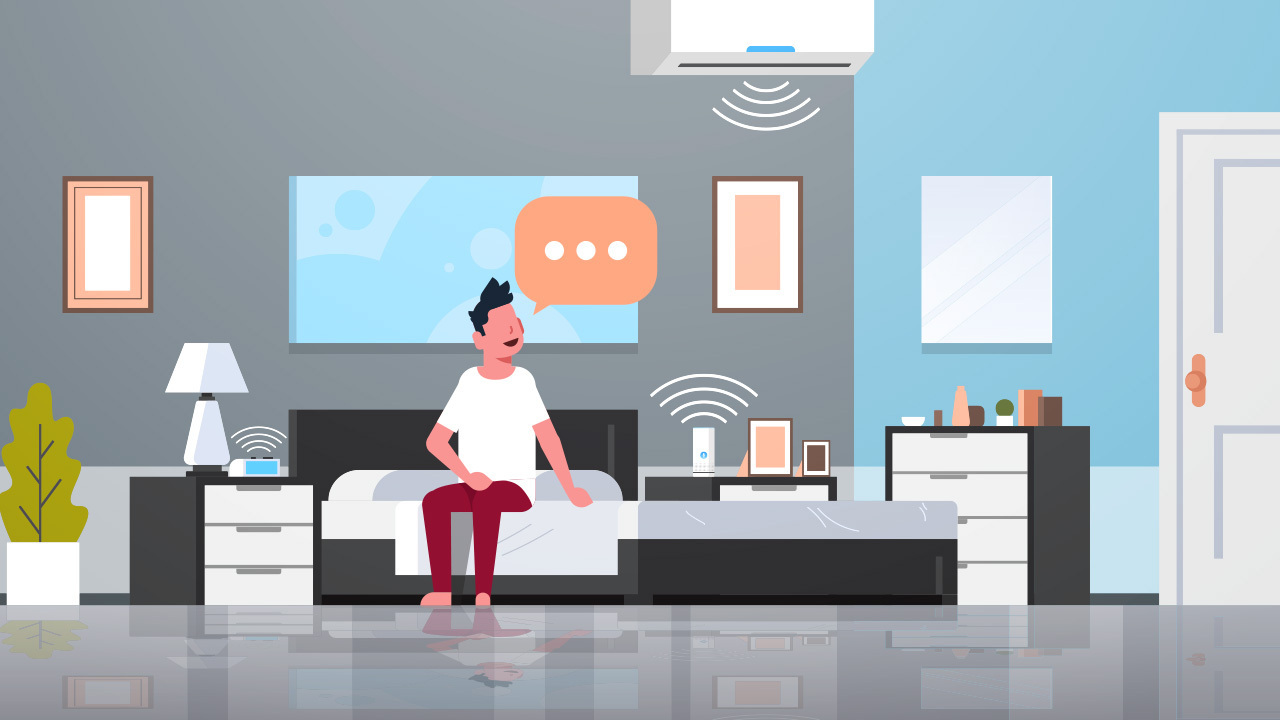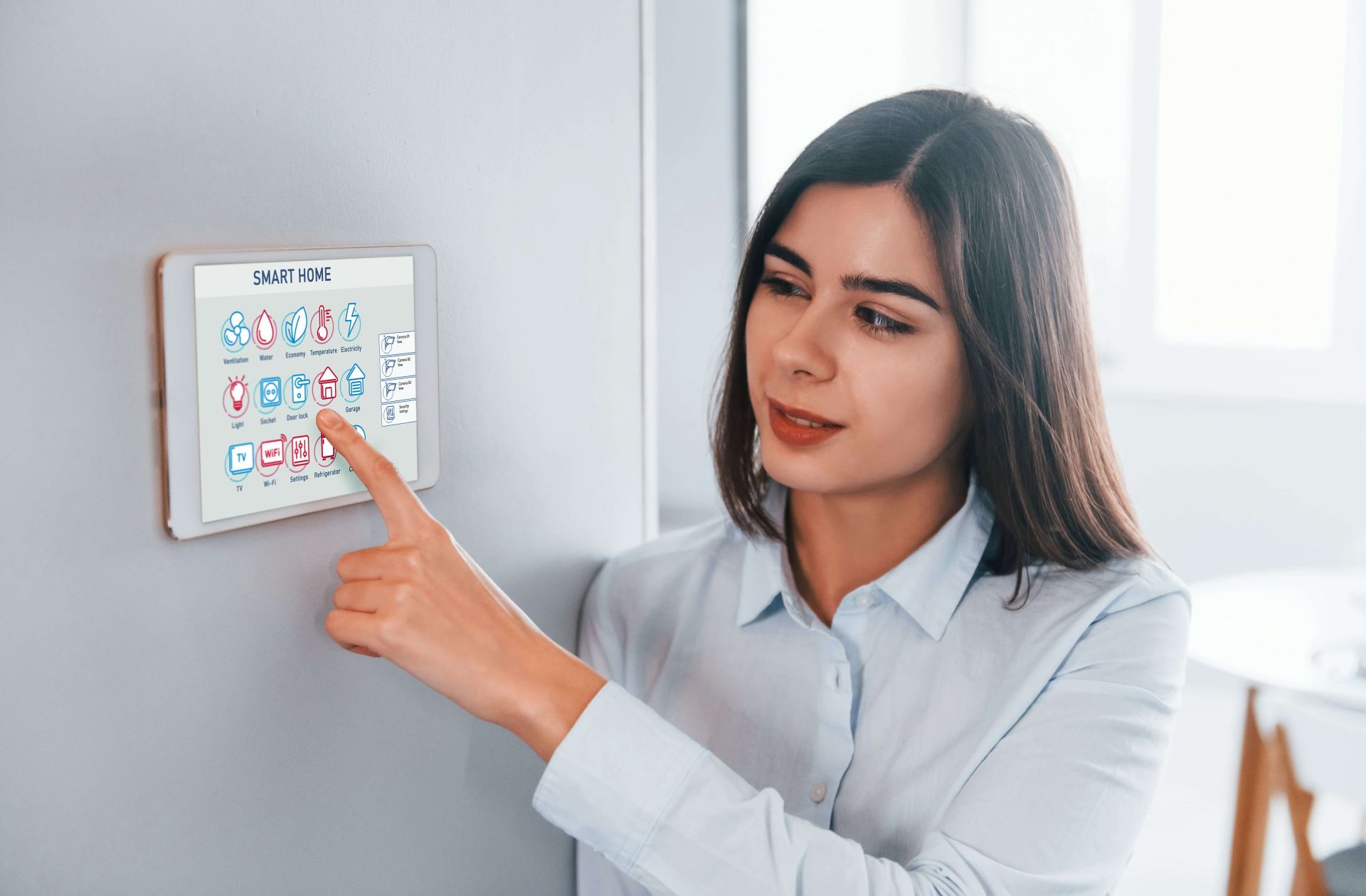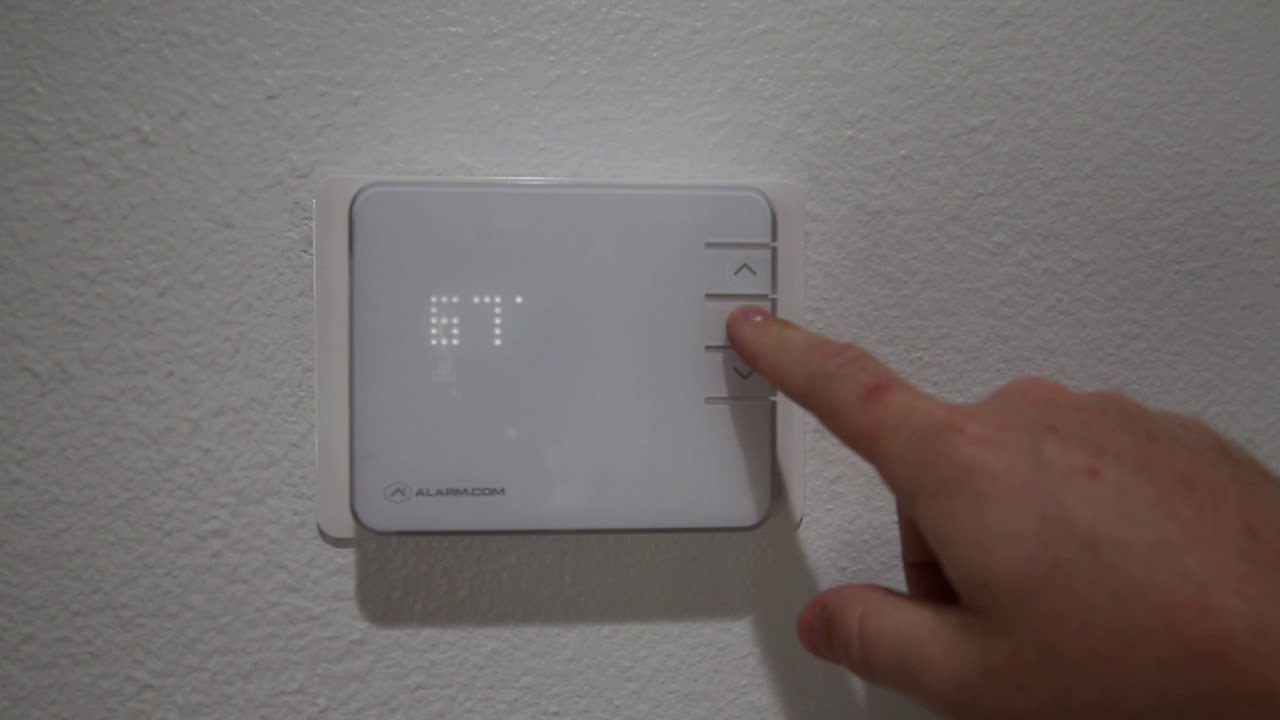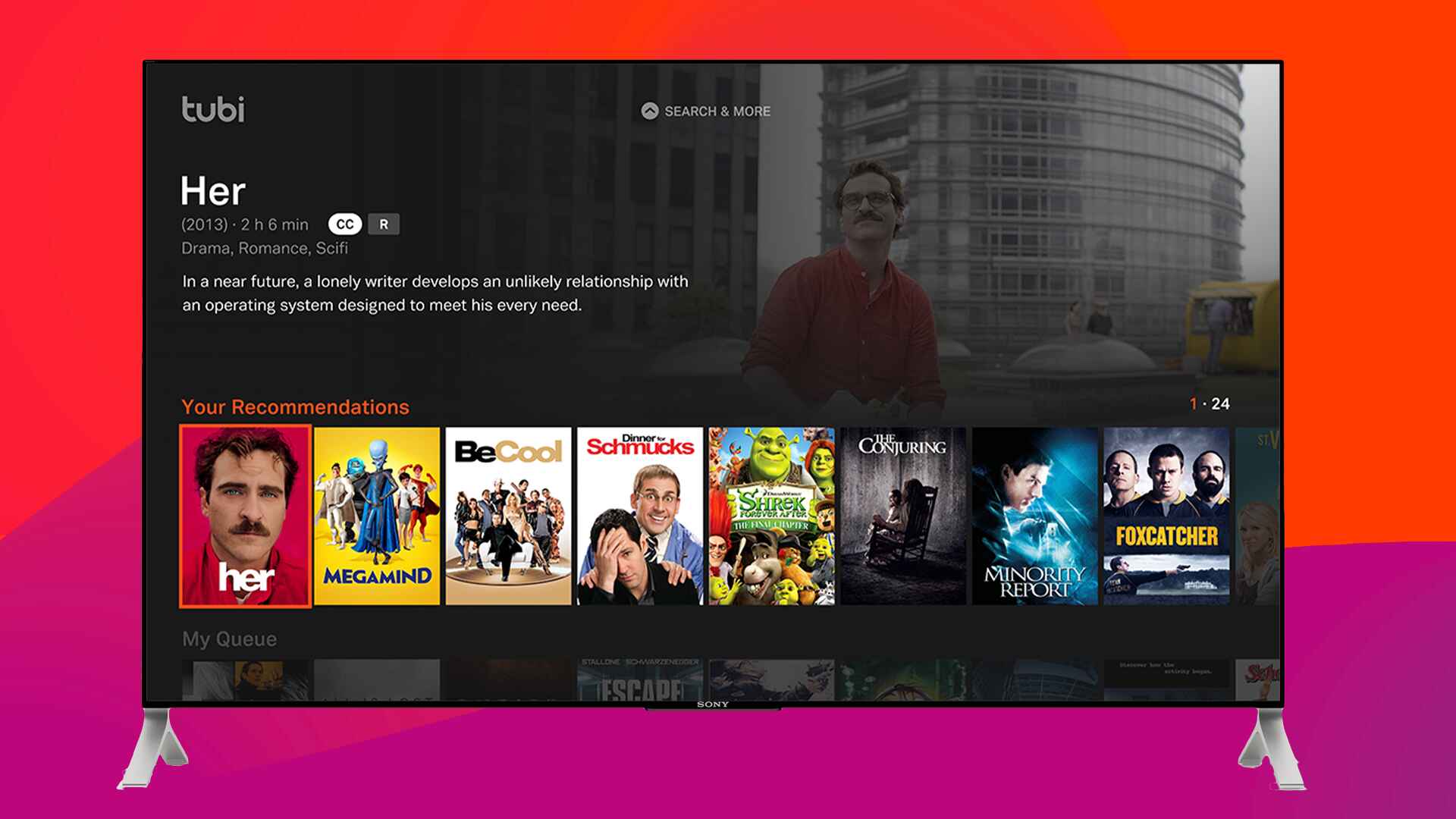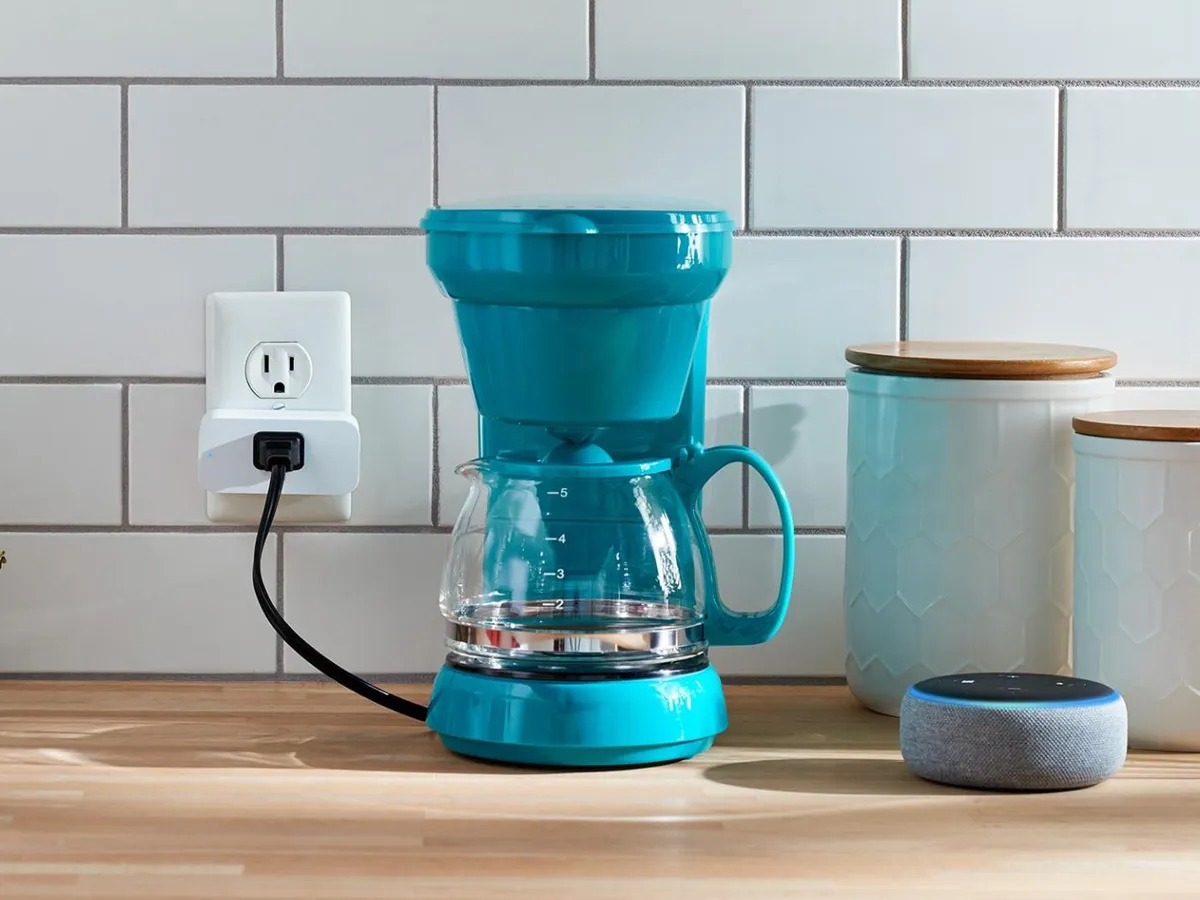Introduction
Welcome to the world of smart homes, where the future meets everyday living. In this fast-paced digital era, technology has revolutionized almost every aspect of our lives, and now it’s taking over our homes too. Smart homes are equipped with cutting-edge technology and connected devices that make our lives more convenient, efficient, and secure.
Gone are the days of manually operating every appliance and device in your home. With a smart home, you can control your lights, thermostat, security system, and more, all with a few taps on your smartphone or even by using your voice. But before diving into this exciting realm, it’s important to understand what a smart home is and how it can improve your lifestyle.
A smart home is essentially an interconnected network of devices and appliances that communicate with each other and can be controlled remotely. These devices are equipped with sensors, Wi-Fi connectivity, and smart technology that allow you to automate and monitor various aspects of your home from anywhere in the world.
The benefits of having a smart home are numerous. Not only does it provide you with convenience and comfort, but it also offers energy efficiency, enhanced security, and the potential to save money in the long run. Imagine being able to adjust your thermostat or turn off your lights from work, ensuring that you save on energy costs and minimize your environmental impact.
Moreover, smart homes provide a seamless and integrated control system. This means that you can manage all your devices and appliances through a central hub or a smartphone app, eliminating the need for multiple remote controls and reducing clutter.
In this guide, we will explore the world of smart homes in-depth, from the types of devices available to essential considerations before setting up your own smart home. We will also provide you with a step-by-step guide on how to set up your smart home and integrate it with voice assistants. Additionally, we will address security and privacy concerns and offer maintenance and troubleshooting tips to ensure a smooth smart home experience.
So, if you’re ready to embrace the future of home automation and take your living space to the next level, let’s dive in and discover the wonders of the smart home revolution.
Benefits of Having a Smart Home
Smart homes offer a myriad of benefits that can greatly enhance the way we live. Here are some of the key advantages of embracing this innovative technology:
- Convenience: One of the primary benefits of a smart home is the convenience it offers. With just a few taps on your smartphone or a voice command, you can control various aspects of your home, from turning off lights to adjusting the temperature. No more fumbling for multiple remote controls or manually operating appliances; everything can be managed from the palm of your hand.
- Energy Efficiency: Smart homes enable you to optimize your energy usage and reduce utility bills. You can program your lights and thermostats to turn on and off automatically, based on specific schedules or occupancy. This eliminates energy waste and ensures that your home is only using power when it’s necessary.
- Enhanced Security: Smart home security systems provide peace of mind by allowing you to monitor and control your home’s security remotely. You can receive instant notifications on your smartphone if there’s a security breach or unauthorized entry. Additionally, you can integrate surveillance cameras, smart locks, and motion sensors to further strengthen your home’s security.
- Remote Access: Whether you’re at work, on vacation, or simply running errands, smart homes allow you to stay connected and in control. You can monitor and manage your home from anywhere in the world through a smartphone app or a web portal. Forgot to lock the front door? No problem. Just check your app and lock it remotely.
- Customization and Personalization: Smart homes empower you to create an environment tailored to your preferences. You can set up personalized scenes that adjust multiple devices with a single command. For example, with a “movie night” scene, you can dim the lights, lower the blinds, and even adjust the temperature to create the perfect movie-watching ambiance.
- Smart Appliances and Devices: In a smart home, you can upgrade your appliances to smart versions, allowing for seamless integration and control. Imagine receiving alerts on your smartphone when your laundry is done or being able to preheat your oven while you’re still at the grocery store. Smart appliances can streamline your daily routines and make tasks more efficient.
These are just a few of the many benefits that smart homes offer. They provide convenience, energy savings, enhanced security, and the flexibility to customize your living space according to your needs and preferences. As technology continues to advance, the possibilities for smart homes are endless, making them an enticing choice for homeowners seeking to improve their quality of life.
Types of Smart Home Devices
Smart home devices come in various forms and cater to different aspects of your home. Here are some common types of smart home devices that you can incorporate into your smart home setup:
- Smart Speakers and Voice Assistants: These devices, such as Amazon Echo or Google Home, serve as the hub for your smart home. They respond to voice commands and act as a central control system, allowing you to interact with other smart devices using just your voice.
- Smart Thermostats: Smart thermostats, like the Nest Learning Thermostat or Ecobee, enable you to manage and control your home’s temperature remotely. They can learn your preferences, create energy-efficient schedules, and even adjust based on occupancy, saving you money on your heating and cooling bills.
- Smart Lighting: Smart lighting systems, such as Philips Hue or LIFX, allow you to control your lights remotely and create customized lighting scenes. You can adjust the brightness, color, and even set timers or schedules to match your lifestyle or create different moods in your home.
- Smart Security Systems: These systems include components like smart doorbells, security cameras, smart locks, and motion sensors. They provide enhanced security, allowing you to monitor your home, receive instant notifications of any suspicious activity, and remotely control access to your property.
- Smart Appliances: From smart refrigerators that keep track of the contents and suggest recipes to smart washers and dryers that can be controlled remotely, smart appliances add convenience to your daily routines. They can also provide energy-saving features and personalized settings.
- Smart Entertainment Systems: These devices include smart TVs, streaming devices, and home theater systems that can be controlled with your voice or smartphone. These systems offer seamless integration with streaming services, music platforms, and even gaming consoles.
- Smart Home Security: Beyond basic security systems, there are additional devices designed to provide enhanced protection. These can include smart smoke detectors, water leak sensors, and carbon monoxide detectors. They can send alerts to your smartphone if any emergencies are detected, allowing you to respond quickly.
- Smart Energy Management: Energy monitoring devices track and optimize your energy consumption. They provide real-time feedback on your energy usage and suggest ways to reduce waste, helping you save money on utility bills and reduce your carbon footprint.
These are just a few examples of the types of smart home devices available in the market. The beauty of smart homes is the ability to mix and match devices based on your specific needs and preferences. With the wide range of options, you can customize your smart home ecosystem to create a truly interconnected and automated living space.
Essential Smart Home Devices for Beginners
If you’re new to the world of smart homes, it can be overwhelming to know where to start. To help you get started, here are some essential smart home devices that are perfect for beginners:
- Smart Hub or Voice Assistant: A smart hub or voice assistant, such as Amazon Echo or Google Home, serves as the central control system for your smart home. It allows you to voice control your devices and acts as a hub for communicating with other smart devices in your home.
- Smart Lighting: Smart bulbs or smart light switches are a great starting point for beginners. They allow you to control your lights remotely, create schedules, and even adjust the brightness or color of your lights. Philips Hue and TP-Link Kasa are popular options in this category.
- Smart Plugs: Smart plugs are simple yet powerful devices that can turn any regular appliance into a smart one. They plug into your wall outlet and allow you to control the power to the connected device using a smartphone app or voice command. TP-Link Kasa and Wemo are popular brands for smart plugs.
- Smart Thermostat: A smart thermostat like the Nest Learning Thermostat or Ecobee can save you money on energy bills and offer convenience. It enables you to control your home’s temperature remotely and learn your preferences over time, automatically adjusting the temperature to maintain energy efficiency.
- Smart Security Camera: Installing a smart security camera, such as the Ring Doorbell or Arlo Pro, can enhance the security of your home. These cameras allow you to monitor your property remotely, receive motion-triggered alerts, and even communicate with visitors through a smartphone app.
- Smart Lock: A smart lock provides convenience and security by allowing keyless entry to your home. With options like August Smart Lock or Schlage Encode, you can lock and unlock your door using a smartphone app, assign temporary access codes, and track entry and exit activity.
- Smart Smoke and Carbon Monoxide Detectors: Essential for home safety, smart smoke and carbon monoxide detectors provide added peace of mind. Brands like Nest Protect and First Alert OneLink can send alerts to your phone in case of emergencies and even provide early warning signs for potential hazards.
These essential smart home devices for beginners offer a solid foundation for your smart home setup. As you become more familiar with the technology, you can gradually expand your smart home ecosystem by adding more devices that suit your needs and preferences.
Remember to research and compare different brands and models to ensure compatibility and functionality for a seamless and integrated smart home experience.
Factors to Consider Before Setting Up a Smart Home
Before diving into setting up a smart home, it’s important to consider a few factors to ensure a successful and tailored experience. Here are some key factors to keep in mind:
- Compatibility: Before purchasing any smart home device, ensure compatibility with your existing devices and systems. Check if the devices you plan to buy work with your smartphone, hub, or voice assistant. Compatibility will ensure seamless integration and smooth operation between devices.
- Budget: Set a budget for your smart home project to avoid overspending. Smart home devices range in price, and it’s easy to get carried away with purchasing unnecessary gadgets. Determine your needs and allocate a budget accordingly, prioritizing essential devices and expanding your setup gradually over time.
- Connectivity and Wi-Fi: Smart home devices rely on a stable internet connection for communication and remote control. Make sure your Wi-Fi network is strong and reliable, especially if you plan to have multiple devices connected simultaneously. Consider upgrading your internet plan if needed to ensure a smooth smart home experience.
- Data Privacy and Security: With any technology that connects to the internet, data privacy and security are crucial. Research and choose devices from reputable brands that prioritize data encryption and provide regular firmware updates. Review the privacy policies and understand how your data will be collected, stored, and used.
- User-Friendliness: Consider the user-friendliness and ease of setup for the devices you plan to purchase. Look for devices that offer intuitive apps, clear instructions, and user-friendly interfaces. This will make the setup process and daily operation much smoother, especially if you are new to smart home technology.
- Scalability and Future Expansion: Think about your long-term plans for your smart home. Consider whether the devices you choose have room for future expansion and can be integrated with other smart devices. It’s wise to choose devices that are compatible with multiple platforms and support standards like Zigbee or Z-Wave for flexibility in the future.
- Support and Customer Service: Look for reputable brands and devices that offer good customer support. Having access to reliable technical support can make a significant difference if you encounter any issues or need assistance during the setup or operation of your smart home.
- Household Lifestyle and Needs: Analyze your household’s lifestyle and needs to determine the most suitable smart home devices. Consider factors such as the size of your home, the number of occupants, and daily routines. Choose devices and features that will enhance your lifestyle, improve convenience, and address specific pain points in your daily life.
Considering these factors before setting up a smart home will help you make informed decisions and ensure a personalized and seamless smart home experience. Take your time to research and plan, and remember that building a smart home is a gradual process that can be customized and expanded as your needs and preferences evolve.
Setting Up Your Smart Home: Step-by-Step Guide
Setting up a smart home may seem complex at first, but with a step-by-step approach, it can be a straightforward process. Here is a guide to help you set up your smart home:
- Assess Your Needs: Determine the specific areas of your home that you want to automate and the tasks you want to simplify with smart devices. Consider factors such as lighting, security, energy management, and entertainment.
- Research and Choose Devices: Research different brands and models of smart devices that align with your needs and budget. Consider factors such as compatibility, functionality, and user reviews. Choose devices that offer the features you desire while ensuring they work harmoniously together.
- Set Up a Smart Hub or Voice Assistant: Install and configure a smart hub or voice assistant, such as Amazon Echo or Google Home, depending on your device ecosystem. Follow the instructions provided by the manufacturer to connect and set up the hub or assistant.
- Connect Devices: Begin connecting and setting up each smart device according to the manufacturer’s instructions. Use the dedicated smartphone apps or the hub/assistant to connect the devices to your home network and register them to your account.
- Create Automation and Scenes: Use the smartphone apps or the hub/assistant to set up automation and scenes. Automation allows you to create rules and triggers for devices to work together automatically, such as turning on lights when motion is detected. Scenes allow you to save specific device settings and activate them with a single command, such as “movie night” to dim the lights and lower the blinds.
- Test and Fine-tune: After setting up each device and creating automation and scenes, test them to ensure they are working as expected. Fine-tune settings and make adjustments as needed to optimize the performance and functionality of your smart home.
- Integrate with Voice Control: If you have a voice assistant, integrate your devices with it. Follow the instructions provided by the manufacturer to link and configure the devices with the voice assistant. This will enable you to control your smart home using voice commands.
- Expand and Customize: Once your initial setup is complete, you can continue expanding and customizing your smart home. Add more devices as needed or explore additional features and integrations to further enhance your smart home experience.
Remember to refer to the user manuals and online resources provided by the manufacturers for specific instructions and troubleshooting guides. Have patience during the setup process, as it may take some time to familiarize yourself with the devices and their functionalities.
Setting up a smart home is an ongoing process that allows you to customize and evolve your living space according to your needs and preferences. Enjoy the convenience, efficiency, and enhanced lifestyle that a smart home brings!
Integrating Smart Home Devices with Voice Assistants
One of the key advantages of a smart home is the ability to control devices with your voice through a voice assistant. Integrating smart home devices with voice assistants, such as Amazon Alexa or Google Assistant, offers a more convenient and hands-free experience. Here’s a step-by-step guide on how to integrate your smart home devices with a voice assistant:
- Check Compatibility: Ensure that your smart home devices are compatible with the voice assistant you have chosen. Most popular smart devices support major voice assistants, but it’s always recommended to double-check compatibility before proceeding.
- Download and Install the App: Download and install the app associated with your voice assistant on your smartphone or tablet. These apps, such as the Alexa app or Google Home app, allow you to set up and manage your voice assistant and connected devices.
- Set Up the Voice Assistant: Launch the app and follow the instructions to set up your voice assistant. This usually involves signing into your account, connecting the voice assistant to your Wi-Fi network, and configuring basic settings like language and location.
- Discover Smart Home Devices: In the app, there should be an option to discover or add smart home devices. Tap on this option, and the app will scan for compatible devices on your network. Make sure your smart home devices are in pairing mode or ready to be discovered.
- Connect and Authorize Devices: Once the voice assistant has discovered your smart home devices, select the devices you want to integrate and follow the prompts to connect and authorize them. This may involve entering login credentials or granting permissions for the voice assistant to control the devices.
- Create Groups and Routines: Group together similar devices, such as lights or speakers, to control them simultaneously with a single voice command. For example, you can create a group called “Living Room Lights” and command the voice assistant to turn them on or off together. Routines allow you to automate a series of actions with a single command, such as saying “Goodnight” to turn off lights, lock doors, and adjust the thermostat before bed.
- Test and Refine: Test the integration by giving voice commands to your voice assistant and observing how the devices respond. Make sure the devices are performing as expected and in sync with your voice assistant’s responses. If needed, refine the settings and adjust the device connections within the app.
- Expand and Customize: As you expand your smart home by adding more devices, repeat the process of discovering and connecting them to your voice assistant. Customize and refine your voice commands to suit your preferences and simplify your daily routines.
Integrating your smart home devices with a voice assistant adds a new level of convenience to your smart home experience. You can now control your devices, set up routines, and manage your home with simple voice commands, making daily tasks even more effortless and streamlined.
Remember to consult the user manuals and online resources provided by both the device manufacturers and the voice assistant platform for detailed instructions and troubleshooting guides specific to your devices and voice assistant.
Security and Privacy Concerns of Smart Homes
While smart homes offer numerous benefits, it is essential to be aware of the potential security and privacy concerns associated with this technology. As we connect more devices to the internet, it’s crucial to prioritize the protection of our personal information and secure our smart homes. Here are some key considerations regarding security and privacy:
- Data Privacy: Smart home devices collect and store data about your activities, routines, and even personal preferences. It’s important to review the privacy policies of the devices and platforms you use to ensure that your data is handled responsibly and securely. Look for devices that offer strong encryption and have transparent data handling practices.
- Secure Network: A secure network is the foundation of a smart home’s security. Set up a strong and unique password for your Wi-Fi network and enable encryption protocols like WPA2. Regularly update your router’s firmware and change the default admin login credentials to prevent unauthorized access to your network.
- Device Security: Keep your smart devices up to date with the latest firmware updates provided by the manufacturers. These updates often include security patches to address vulnerabilities. Disable any unnecessary features or services on your devices and change default login credentials to strengthen their security.
- Use Strong Passwords: Create unique and complex passwords for each of your smart home devices and accounts. Avoid using common passwords or easily guessable information. Consider using a password manager to securely store and manage your passwords.
- Two-Factor Authentication: Enable two-factor authentication whenever possible. This adds an extra layer of security by requiring a second verification method, such as a code sent to your smartphone, in addition to your password.
- Smart Home Ecosystem: Regularly review and update the permissions and access levels assigned to different devices and apps within your smart home ecosystem. Restrict permissions to limit what data and control each device or app has over your smart home environment.
- Network Segmentation: Consider segmenting your smart home devices from other devices on your network, such as computers or smartphones. This can be done by creating a separate network or VLAN for your smart home devices, limiting their access to other devices and minimizing the potential for unauthorized access.
- Secure Remote Access: If you access your smart home devices remotely, ensure that the connection is encrypted and secure. Consider using a virtual private network (VPN) to establish a secure and private connection when accessing your smart home remotely.
- Regular Monitoring: Regularly monitor the activity logs of your smart home devices and review any suspicious or unusual behavior. Set up alerts and notifications for device activity to stay informed and detect any potential security breaches.
- Secure Installation and Disposal: When setting up new devices, follow the manufacturer’s instructions carefully to ensure a proper and secure installation. When disposing of old devices, make sure to wipe any personal data and reset them to factory settings to prevent unauthorized access to your information.
By being proactive and taking these security and privacy measures, you can enjoy the benefits of a smart home while minimizing the risks associated with connected devices. Stay informed about the latest security developments and follow best practices to protect your smart home and personal data.
Smart Home Maintenance and Troubleshooting
Maintaining and troubleshooting your smart home devices is essential to ensure their optimal performance and longevity. While smart devices are designed to be user-friendly, occasional maintenance and troubleshooting may be required. Here are some key tips for maintaining and troubleshooting your smart home:
- Keep Devices Updated: Regularly check for firmware updates provided by the manufacturers and apply them to your devices. Updates often include bug fixes, security enhancements, and new features that can improve the performance and stability of your devices.
- Regularly Test Devices: Periodically check and test your smart home devices to ensure they are functioning correctly. Test their connectivity, responsiveness, automation routines, and any integrations with voice assistants or other devices. This can help identify and resolve any issues before they become major problems.
- Reset and Reconfigure: If you encounter issues with a specific device, try resetting it to factory defaults and reconfiguring it. This can often resolve software glitches or configuration errors that may be causing problems.
- Optimize Wi-Fi Coverage: Ensure that your Wi-Fi network provides adequate coverage throughout your home, especially in areas where you have smart devices. Consider adding Wi-Fi extenders or access points to enhance coverage and minimize connectivity issues.
- Check Power and Batteries: Sometimes, smart devices may have power supply or battery issues. Ensure that all devices are properly connected to power sources or have sufficient battery charge. Replace batteries when needed to maintain reliable operation.
- Monitor Performance: Keep an eye on the performance of your smart home devices by monitoring their activity logs and checking for any unusual behavior. This can help identify any potential issues, such as devices disconnecting frequently or automation routines not functioning as expected.
- Review Connected Services: If you experience issues with specific integrations or services, review the connected services or apps associated with the devices. Ensure that you have granted the necessary permissions and that the services or apps are up to date.
- Check Network Connectivity: If you notice repeated connectivity issues with your smart devices, ensure that your internet connection is stable and that your Wi-Fi network is not overloaded. Check for any Wi-Fi interference or signal obstructions that may affect the performance of your devices.
- Contact Support: If you encounter persistent issues that you are unable to resolve, reach out to the manufacturer’s customer support or consult online support forums for assistance. They can provide guidance and troubleshooting steps specific to your smart home devices.
- Consider Professional Help: In some cases, you may need professional assistance, especially for more complex smart home setups or when dealing with technical issues beyond your expertise. Consult with smart home professionals or technicians who can provide expert help and guidance.
Regular maintenance, monitoring, and troubleshooting are key to ensuring a smooth and reliable smart home experience. By being proactive and addressing any issues promptly, you can maintain the functionality and efficiency of your smart home devices, enhancing your overall smart home experience.
Conclusion
In conclusion, smart homes have revolutionized the way we live, offering convenience, energy efficiency, enhanced security, and customization. With the right devices and setup, you can control different aspects of your home with a few taps on your smartphone or by using your voice through a voice assistant. However, before diving into the world of smart homes, it’s essential to consider certain factors and address security and privacy concerns.
When setting up your smart home, assess your needs, research and choose compatible devices, and allocate a budget. Take into account factors such as connectivity, data privacy, user-friendliness, scalability, and support. Following a step-by-step guide, integrate your devices with a voice assistant to enjoy a more convenient and hands-free experience.
As smart home technology continues to evolve, it’s important to stay informed about security and privacy best practices. Protect your data by ensuring secure networks and strong passwords, regularly updating firmware, and reviewing access permissions. Address maintenance and troubleshooting needs by keeping devices updated, testing functionality, and optimizing network coverage.
By taking these steps and staying proactive, you can create a smart home that enhances your lifestyle while minimizing risks. Enjoy the convenience, comfort, and automation that a smart home provides, and continue to explore new devices and technologies as you customize and expand your smart home ecosystem.







